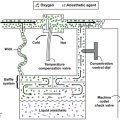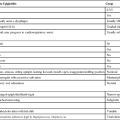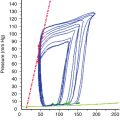Anesthesia for bronchoscopy
Clinical aspects of bronchoscopy
The indications for bronchoscopy are outlined in Box 156-1. A complete history and physical examination are necessary for all patients undergoing bronchoscopy for whom an anesthesia provider has been asked to assist. Concurrent medical problems increase the risks associated with the procedure; for example, patients who have a history of lung disease have an increased incidence of bronchospasm during bronchoscopy. Similarly, patients with restrictive ventilatory defects (e.g., interstitial lung disease) with or without preexisting hypoxia may have significant hypoxia during the procedure. Patients with lung cancer undergoing bronchoscopy may have other comorbid conditions (e.g., central airway obstruction, superior vena cava obstruction, metastatic lesions [bone, brain, liver] and electrolyte imbalance [hyponatremia and hypercalcemia]). Patients with pulmonary hypertension, elevated blood urea nitrogen (>30 mg/dL), chronic renal disease, and aspirin ingestion have an increased risk of postoperative bleeding. Interestingly, patients with recent myocardial infarction, unstable angina, or refractory arrhythmias often undergo bronchoscopy without significant complications.
Topical anesthesia for bronchoscopy
The sensory innervation of the upper airway is described in Table 156-1. Topical anesthetic agents, administered topically or via peripheral nerve blocks, can be used to anesthetize the upper airway. Two percent lidocaine (liquid or gel) is commonly used for topical airway anesthesia due to its margin of safety, rapid onset, and short duration of action. The maximum safe dose of lidocaine is 4 mg/kg. Toxicity depends on the rate of absorption and the resulting blood levels. Two percent lidocaine sprayed into or 4% viscous lidocaine-soaked pledgets placed in the nares (along with phenylephrine or cocaine to vasoconstrict the mucosal surfaces) can be used to anesthetize the nasopharynx. Oropharyngeal anesthesia can be achieved by one of several means (Box 156-2). These techniques provide satisfactory anesthesia of the upper airway. If persistent gag reflex prevents bronchoscopy, then the use of bilateral glossopharyngeal nerve blocks is indicated. Using a tonsillar needle, 3 mL of 2% lidocaine is injected into the midpoint of both posterior tonsillar pillars to a depth of 1 cm. This will effectively block the submucosa pressor receptors at the posterior aspect of the tongue. These blocks should always be performed following superior laryngeal nerve blocks because, without them, significant pharyngeal muscle and tongue relaxation may result, obstructing the airway.
Table 156-1
Sensory Innervation of the Upper Airway
| Anatomic Structure | Nerve Supply |
| Nose | Trigeminal V—ophthalmic V1, maxillary V2 |
| Tongue | |
| Anterior | Trigeminal V—lingual V3 |
| Posterior | Glossopharyngeal IX |
| Pharynx | |
| Nasal | Trigeminal V—maxillary branch V2 |
| Oral | Glossopharyngeal IX |
| Larynx | Vagus X—internal laryngeal branch |
| Vocal cords | Vagus X—internal laryngeal branch |
| Trachea | Vagus X—internal laryngeal branch |
Complications associated with bronchoscopy
A mortality rate of less than 0.1%, a rate of major complications of less than 1.5%, and a rate of minor complications of less than 6.5% have been reported with the use of bronchoscopy (Box 156-3). Significantly, 50% of complications are due to the premedication, the general anesthetic, or the local anesthetic agent used for the procedure. Because rigid bronchoscopy is usually carried out under total intravenous anesthesia, awareness is a recognized complication.





